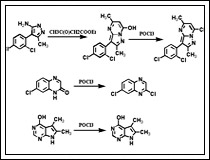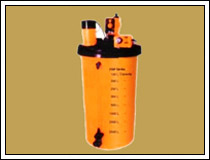Chlorination
Chlorination, as the name suggests is one of the most common and basic methods of treating contaminated water by using chlorine. Chlorine, a very common  water disinfectant effectively eliminates all traces of pathogenic bacteria and is known to oxidize lipid contaminants in the water thus creating free radicals. Chlorinated water is very effective in preventing the spread of waterborne diseases. water disinfectant effectively eliminates all traces of pathogenic bacteria and is known to oxidize lipid contaminants in the water thus creating free radicals. Chlorinated water is very effective in preventing the spread of waterborne diseases.
This method of treating/disinfecting water was first put to use by two scientists Louis-Bernard Guyton de Morveau (in France) and William Cumberland Cruikshank in the early eighteenth century. During the early nineteenth century, the U.S army employed compressed liquefied chlorine gas to purify their drinking water. But it was William J. L. Lyster who developed the modern technique of using a solution of calcium hypochlorite in a linen bag to treat water. This remained the standard method for decades and is still the basis on which present day systems of chlorination of municipal water supplies are fabricated.
Chemistry of Chlorine & Water
When chlorine is added to water, it reacts to form a pH dependent equilibrium mixture of chlorine, hypochlorous acid and hydrochloric acid. The reaction can be represented as :
Cl2 + H2O → HOCl + HCl
Depending on the pH, hypochlorous acid partly dissociates to hydrogen and hypochlorite ions:
HClO → H+ + ClO-
In acidic solution, the major species are Cl2 and HOCl while in alkaline solution effectively only ClO-
is present. Very small concentrations of ClO2-, ClO3-, ClO4- are also found.
What is the recommended chlorine level for continuous disinfection?

Based on various factors it has been documented that drinking water should contain 2 to 3 ppm chlorine through an automated watering system. Also, it has to be noted that the chlorine dose in bottled water should be adjusted so that the concentration does not fall below 2 ppm to obtain low count of chlorine resistant micro organisms like pseudomonas aeruginosa.
For periodic sanitization, the recommended level of chlorine is 20 ppm for 20-30 minutes, as higher concentration or longer soaktime tends to increase the effectiveness of sanitization. Also, repeated sanitization at higher concentration may result in corrosion of stainless steel drinking valves, manifolds and room distribution pipings in automated water system.
|